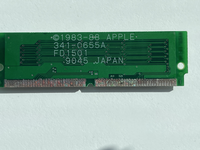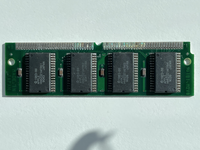Out of interest (and wanting to know more about how such things are fabricated), why do you say that?
Because they are a professional business that make boards, all day, every day. It is not in their interest to get things wrong, and if they were, they'd have already invested money and time to sort it. These boards are trivial to make compared to some of the stuff they'd be asked to make.
We all can't understand why things aren't working sometimes, but it is almost never the parts we use, but decisions, misunderstandings or mistakes we have made along the way. You're talking like the three boards are three independent cases, but there are multiple common factors - some components, some parts selection, and the methods you've used. You might have cooked a chip on all three, or solderbridged a via on all three, or used an LS where you should have used an F series logic chip. Did you make an error on the first and copy the first board for the other two? Have you used the same PSU on all three?
Its a probability thing - has a company that has a good reputation made an error on three boards in a row, or, have you? Not meaning to be mean, but unless you are a professional batch assembly person and these are exceptionally wild circumstances, you're really looking to work out where you went wrong.
Really sorry, it sounds like I'm questioning your ability, but I'm not - I'm just saying that manufacturers are on a different level to us hobbyists. My stuff doesn't work all the time, but I've been in that situation enough to say while technically possible that a manufacturer could have messed up, it has
always being something I have done.



